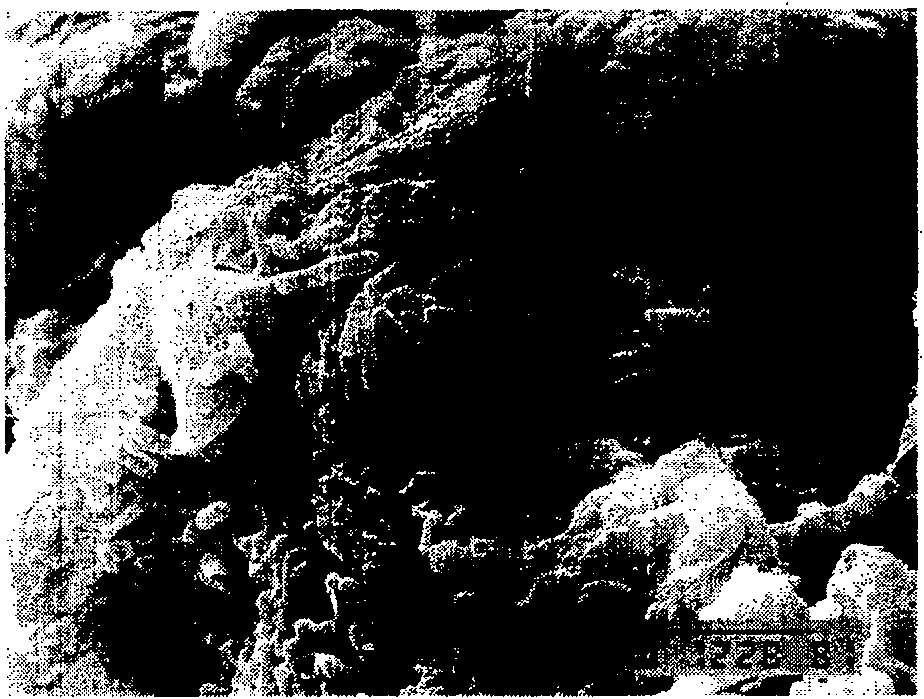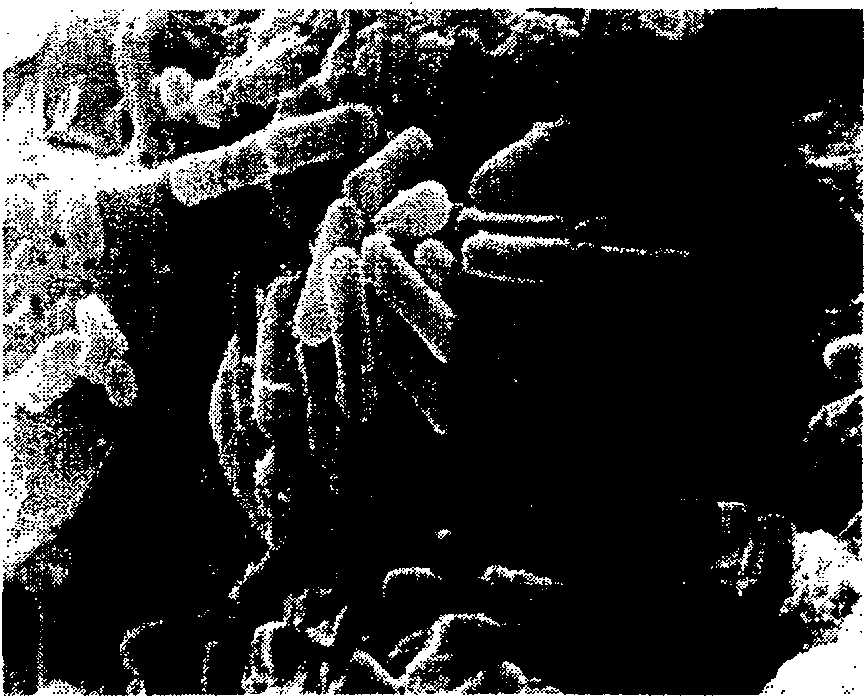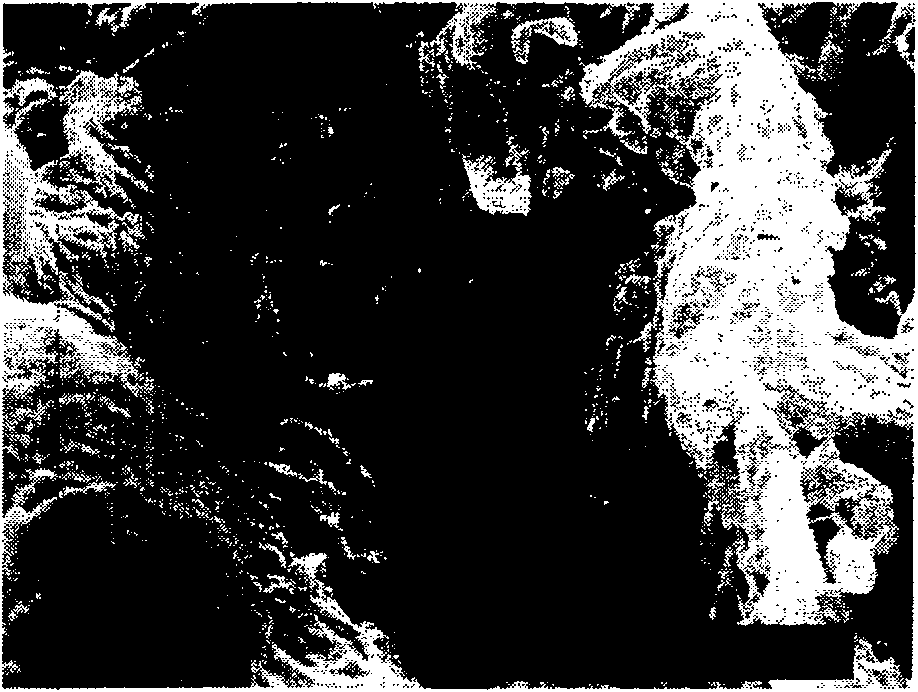Method for producing immobilized bacterium with peat soil as carrier
A peat soil and carrier technology, which is applied in the direction of being fixed on or in an inorganic carrier, to achieve the effects of simple and easy method, increased resistance and enhanced competitiveness
- Summary
- Abstract
- Description
- Claims
- Application Information
AI Technical Summary
Problems solved by technology
Method used
Image
Examples
Embodiment 1
[0022] (1) Liquid culture of immobilized bacteria
[0023] In seed medium (glucose 1.25%, beef extract 0.25%, NH 4 NO 3 0.1%, MgSO 4 ·7H 2 O 0.02%, KCl 0.02%, pH 6.5) Erlenmeyer flasks were inoculated with Bacillus, and placed in a constant temperature shaker at 28-30°C for 12 hours.
[0024] (2) Alkalization treatment of immobilized carrier
[0025] Pass the natural air-dried peat soil through a 2mm sieve, soak it in 0.1mol / L NaOH solution, solid-to-liquid ratio 1:10, shake on a shaking table for 24 hours, and rotate at 110rpm; then take it out and adjust the pH to 7.0 with 1mol / L NaOH solution, and then centrifuge. 3000rpm, 15min; remove the supernatant, dry the precipitate at 60°C, and grind it through a 1mm sieve.
[0026] (3) Immobilized carrier infiltration culture
[0027] Add sterile water to the alkalized peat soil at a ratio of 1ml / g, sterilize with high temperature and humidity for 90 minutes, and set aside.
[0028] (4) Preparation of immobilized particles ...
Embodiment 2
[0034]One of the differences from Example 1 is: the carrier alkalization treatment step is to pass the natural air-dried peat soil through a 2mm sieve, neutralize the peat sample to pH 7.0 with 1mol / L NaOH, and then use 0.15mol / LNaOH to adjust the solid-liquid ratio to 1:5, shaking on a shaking table for 12 hours at a speed of 110 rpm, centrifuging at 3000 rpm for 10 minutes, drying the precipitate at 80°C, and grinding it through a 1mm sieve.
[0035] The second difference is that the carrier does not have an infiltration treatment step after alkalization, but directly sterilizes the dried peat soil, then inoculates, proliferates and cultures for 3 days, and obtains immobilized particles.
[0036] The third difference is that the immobilized granules have no proliferation and culture process. Take the bacterial suspension, add it evenly to the surface of the sterile carrier, inoculate 2%, seal it, put it in a constant temperature incubator at 28°C and incubate it in the dark ...
Embodiment 3
[0040] The difference from Example 1 is that: the carrier alkalization treatment method is to pass the natural air-dried peat soil through a 2mm sieve, soak it with 0.05mol / L NaOH solution, the solid-to-liquid ratio is 1:8, and vibrate on a shaking table for 18h at a speed of 110rpm; then Take it out and adjust the pH to 6.5 with 1mol / L NaOH solution, then centrifuge at 3000rpm for 15min; remove the supernatant, dry the precipitate at 70°C, and grind it through a 1mm sieve.
[0041] The cell density per unit volume of the immobilized bacterial particles prepared by the above steps is very high, 3.16×10 11 individual / g, which was 3 orders of magnitude higher than that of the control.
[0042] The immobilized particles remediate the soil polluted by polycyclic aromatic hydrocarbons according to the ratio of 2% of the particles, and the removal rate of PYR is 47% and the removal rate of BaP is 33% after 60 days of remediation.
PUM
 Login to View More
Login to View More Abstract
Description
Claims
Application Information
 Login to View More
Login to View More - R&D
- Intellectual Property
- Life Sciences
- Materials
- Tech Scout
- Unparalleled Data Quality
- Higher Quality Content
- 60% Fewer Hallucinations
Browse by: Latest US Patents, China's latest patents, Technical Efficacy Thesaurus, Application Domain, Technology Topic, Popular Technical Reports.
© 2025 PatSnap. All rights reserved.Legal|Privacy policy|Modern Slavery Act Transparency Statement|Sitemap|About US| Contact US: help@patsnap.com



